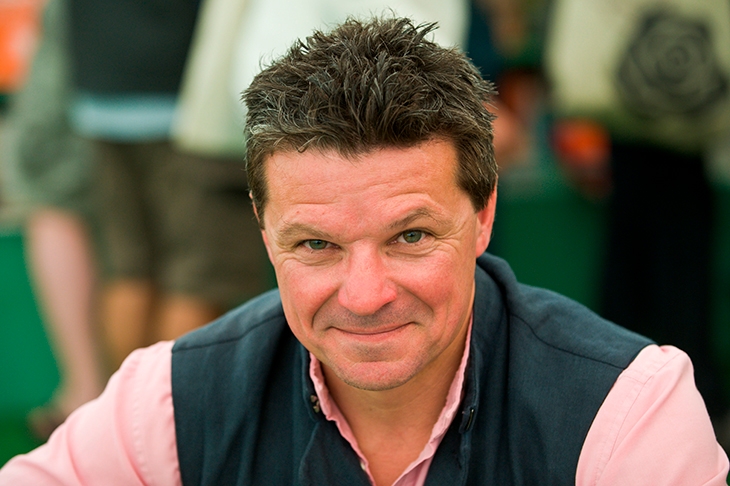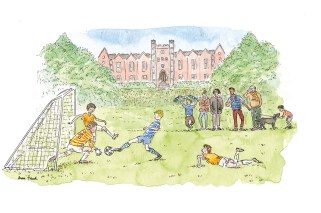Wheat flour, and the bread made from it, has been a recurring cause of concern for the British for centuries, with parliament passing laws to control the size of loaves and quantity of additives. The 1758 Act required bread to contain ‘genuine meal or flour, common salt, pure water, eggs, and yeast or barm, or such leaven as magistrates shall occasionally allow of’. Flour might be adulterated, mostly to whiten the bread; but rather than this being the work of a mad baker-poisoner it was more likely a response to a public that wanted not just the whitest bread but the cheapest, whitest bread. In the years following the 1820 publication of the German chemist Friedrich Accum’s A treatise on adulterations of food and culinary poisons, an editorial in the Lancet explained the dilemma facing bakers and millers,quoting a reader’s letter:
There is much bread sold in London that has not a particle of alum in it; but then the price is high, for it is made of the best flour. Most people choose a cheap loaf… made of cheap flour, which, to produce a white and firm loaf, must have a large dose of alum mixed with it.
Bakers were no doubt encouraged to behave by the double threat of ‘hard labour for a month’ and their name, bakery and home address being published in newspapers ‘near the place where the offence was committed’. But, arguably, the most significant step in the quest for affordable white bread came from the United States in the 1870s, where the invention of high-speed roller-milling, by the Welsh-born John Stevens, meant that finer, whiter flour could be cheaply made and potentially exported to the UK. Together with increasingly powerful machine-mixing, it produced a loaf of seductive whiteness beyond the dreams of previous generations.
Penn’s musings on the symbolism of the whole loaf and the cut slice finally exhaust the patience of his son
His dislike of today’s version of that industrialised soft white loaf led to Robert Penn’s bread-making/grain-growing hobby-turned-obsession, described in Slow Rise, set around his home in the Black Mountains. In the book, the cyclist and former lawyer explores his enthusiasm for sourdough bread, and forgotten ‘landrace’ wheats, as he supervises their planting, harvesting and the milling of the grain that would go into his loaf.
We’re told of his struggles with ‘a litany of intestinal complaints’, including amoebic dysentery and giardiasis, as he speculated that his years of ‘cycling around the world, eating at the roadside and drinking untreated water’ might be to blame, while his wife Vicky wondered whether he had coeliac disease. Tests came back negative; but on reading Andrew Whitley’s Bread Matters, Penn ‘stopped eating industrial bread, and the era of his stomach ailments ended’.
Vicky had recently begun making ‘excellent, slow-fermented sourdough bread’, using a tub of starter given to her by a neighbour after she’d expressed an interest. But Robert’s self-diagnosed possible wheat intolerance suppressed his urge to eat her bread, and he remained crustless until he learnt to bake himself. Then he found that on pulling his sweet-smelling loaves from the oven, he ‘felt like Odysseus bound to the mast of his galley as it sailed past the island of the Sirens’. Sure. The dazzle of your first efforts at a new activity can do that to a man.
Penn’s wife, and his own role as the father of a young family, are background features in the book, which is more about taking his hobby to what might seem like extremes: growing wheat, tackling milling and baking a loaf from the flour. His children appear briefly, to tease him ‘for paying more attention to his starter than to them’, which he agrees with. But soon we’re off again, into a vivid but lengthy description of his curious sourdough starter, while the meatier issue of his dislocated, distracted life hangs unanswered over the narrative.
Penn’s ability to shrug off outside interruptions and to pass on his daughter’s comment — ‘Dad’s lock screen is a loaf of his own bread. How sad is that’ — while retelling stories he’s been told (by Jim, an itinerant wheat harvester working the USA’s Great Plains, or by Mohammed in the Nile Delta) made me question whether I too did that, and ponder my own food obsessions and their effect on others. Penn travels widely, and there’s a sense of guys together having fun; but after a time the giddy excitement of each new experience begins to weigh a bit heavily.
More compelling are the passages about his efforts to grow that ‘well-known and essentially Welsh wheat’ Hen Gymro from a sackful of grain planted on an acre lent to him for a year by a farmer friend. After a trial planting, another friend with a tractor ‘tilled the soil, planted the Hen Gymro seed and harrowed it over in less than two hours’. Penn is left to ‘walk around [his] blessed plot’, thinking of the miracle of life. After the effort of threshing the grain he remarks:
It is like having your first child — you get a lot of advice and encouragement about the pregnancy and birth, but no one says you’ll be punching yourself in the face with a mixture of exhaustion and boredom.
The resulting grain is then turned into flour by the respected artisan millers Anne and Andrew Parry at the Felin Ganol watermill in Llanrhystud — and from this, Penn’s loaf is presented to his family. Unlike ‘showboating bakers like my wife [who] readily produce loaves with shiny, wild, uneven-sized holes’ through the crumb, Penn’s effort produces a pale brown, modestly aerated, slightly moist loaf. His musings on the symbolism of the whole loaf and the cut slice finally exhaust the patience of his son, who says: ‘Dad, too much… No one is interested. Can you please just cut the bread?’ But Penn thinks of ‘the many people who had shared their knowledge, and others who had bent their backs to my endeavour’.
Is it a book to excite the tribe of sourdough bakers that lockdown’s spare time has created? Absolutely. Slow Rise will be welcomed by the new bread geeks. And though the stories aren’t especially useful, they will resonate for the man (in particular) who is looking for complexity while he sets about making a simple loaf of bread.






Comments